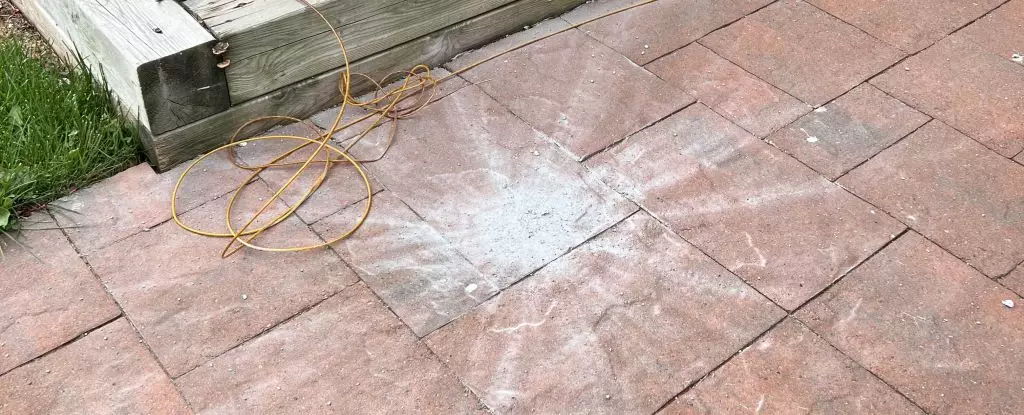In a world overflowing with technology, the ordinary act of documenting daily life can lead to extraordinary discoveries. One such instance emerged in July 2024, when a seemingly mundane video recorded by a Ring doorbell camera in Charlottetown, Prince Edward Island, unveiled something remarkable: the first recorded instance of a meteorite’s sound upon its impact with Earth. Homeowners Joe Velaidum and Laura Kelly were caught off guard by what would soon become a significant scientific revelation.
The day began like any other for Velaidum and Kelly as they took their dogs for a leisurely walk. The ordinary rhythms of life were abruptly interrupted by what they later discovered was a meteorite crashing onto their front pathway. Upon returning home, they were greeted not only by the sight of debris strewn across their paved walk but also by the sound that accompanied its fall — a startling detail that seemed to suggest that they had been witnesses to a celestial event.
As they cleaned up the remnants of the debris, the initial surprise turned into curiosity. It wasn’t until Kelly’s parents, who lived next door, made the connection between the loud noise they had heard and the peculiar rubble on the ground that the couple considered the extraordinary possibility that they had been part of a meteorite fall. This spontaneous inquiry led them to review footage from their Ring camera, where they discovered a recording that would soon capture global attention.
The Role of Technology in Astronomy
This event raises interesting questions about the intersection of technology and space science. The ubiquitous presence of cameras allows for unprecedented documentation of natural phenomena. The capabilities of modern technology have enabled amateurs and enthusiasts alike to observe and record events that were once solely the purview of professionals. Here, the Ring camera transformed from a mere security device into a critical tool for scientific research.
In response to their find, Velaidum contacted Chris Herd, a geologist from the University of Alberta. Herd meticulously examined the fragments gathered by Velaidum and identified them as meteorites, specifically classifying them as ordinary chondrites. This category of meteorite is the most common, making up nearly 90% of meteorite finds, and offers invaluable insights into the primordial materials that formed the early Solar System.
What makes this incident particularly remarkable is not just the visual evidence provided by the video footage but also the accompanying sound of the meteorite impacting the ground—a feature that has never been documented in prior meteorite falls. Herd’s assertion that this might be the first time a meteorite’s descent has been both seen and heard adds a layer of significance to the event. This duality of sensory documentation highlights the capability of modern technology to enhance our understanding of natural events.
As Herd aptly put it, “The Charlottetown Meteorite sure announced its arrival in a spectacular way.” The meteorite’s characteristics and the manner in which it arrived demonstrate the intersection of nature’s unpredictability and technological advancements in observing these rare occurrences.
The implications of such findings extend beyond mere curiosity. The data gleaned from such meteorites can provide scientists with precious context about the Solar System’s early atmosphere and conditions. Ordinary chondrites, in particular, hold secrets about the cosmic environment that existed when the planets were forming, offering researchers a tangible connection to our planet’s history.
Furthermore, events like this can spark interest in the field of space science among the general public. As Velaidum astutely noted, it is a marvel that many people may not have thought about before, but with the right technological tools at hand, moments of cosmic significance are now within reach for everyday citizens.
For those intrigued by this unique phenomenon, the message is clear: the universe is always in motion, with microscopic particles of space dust continually entering Earth’s atmosphere. While the chance of witnessing a meteorite landing on one’s doorstep is rare, it’s always worth looking up and paying attention to the sky. As we continue to document our lives through technology, who knows what other celestial wonders lie waiting to be discovered right outside our front doors? Happy hunting!


Leave a Reply